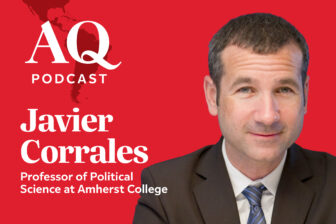Since April, a constructive reform movement at the Inter-American Development Bank (IDB) has ground to a halt due to a polemic involving then-President Mauricio Claver-Carone, who stood accused of misconduct and was fired on September 26. The Bank is now run on an interim basis by its number-two official, Reina Irene Mejía, while nominations for a permanent replacement are received and a new president is elected by the IDB’s shareholder governments.
This is an unfortunate turn of events for one of the world’s major and most reputable regional development-finance institutions, which before this scandal broke was in the process of being modernized to become more agile, more supportive of environmental sustainability objectives, gender equality and economic reforms, and a more willing partner of innovative private-sector firms.
The IDB is the largest development bank in the Americas, whether measured by assets, capital or shareholders. Established in 1959 ahead of all other such regional multilateral lenders around the globe, it is owned by 48 governments, including 26 borrowing members from Latin America and the Caribbean and 22 non-borrowing nations. The United States has a 30 percent stake, by far the single largest holding.
The Bank, which facilitated some $23 billion in lending to the region last year, provides credit mainly to governments, including their agencies and state-owned or backed enterprises. But its fastest-growing arm is the Inter-American Investment Corporation, now known as IDB Invest, a legally autonomous entity which lends to and invests in private-sector banks and companies. IDB Invest offers a range of financial services in the form of direct loans, guarantees and indirect lines of credit, and it also makes equity investments—all without the benefit of government guarantees, yet its credit rating (AA+) is a mere one notch below that of the IDB’s (AAA).
During the COVID-19 pandemic years of 2020-21, the IDB and IDB Invest rose to the challenge and provided critical financial support to the public and private sectors in the region. From end-2019 to end-2021, the IDB’s balance sheet grew $15 billion, while on top of that IDB Invest’s assets nearly doubled, expanding $3.7 billion by stretching its leverage ratio up to the AA-rated median for its peers.
Last March, at the urging of Claver-Carone, the Boards of Governors of the IDB and IDB Invest approved a roadmap for a series of institutional reforms, and also mandated a proposal for a capital increase to benefit IDB Invest. In July, the U.S. Treasury expressed support for the reform agenda and its readiness to begin negotiations on raising additional capital for IDB Invest, in which the U.S. is also the largest shareholder (14% of total). Both initiatives are central to U.S. national interest regardless of who is leading the Bank.
The IDB is to promote reforms to improve social protection, public health, inclusion, gender equality, labor markets and climate action. It is to work more closely with governments to correct market failures and structural bottlenecks, bolster their essential institutions, help them reach net-zero-emissions targets, strengthen rule of law, ensure equal opportunities for women and improve the climate for private business and investment.
Indeed, the IDB is to set an example of institutional progress by becoming less bureaucratic and more risk-prone, and thus more innovative and responsive. This is to be facilitated by introducing enhancements to its project design, a new portfolio management system to measure and achieve results, and updated financial and technical instruments.
The goal is to position the IDB and IDB Invest to provide more effective support for government reforms; make available new contingent and rapid-disbursement facilities; introduce more innovative climate-change instruments; put in place increased execution capacity for counterparts; and have the risk appetite and equity-investment policies that favor private-sector projects.
IDB Invest is to develop a more impactful approach to economic development. The new model will allow it to scale up work with investors and companies throughout the region. Its innovative approach would have it originating more influential projects, de-risking private-sector investment and deploying new financial and technical tools to help crowd-in private funding.
The people of Latin America and the Caribbean should not have to wait another six or more months for IDB management and staff to refocus their attention on what they need to accomplish.
After all, the COVID-19 pandemic threw millions of people in the region into poverty and set back a decade of gains in equality, particularly for women. Latin America is reeling from the consequences of the world’s longest school closures—an average of 231 days. According to an alarming recent report by the World Bank and UNICEF, surveys suggest that four out of five Latin American sixth graders will lack the ability to understand a simple text.
In 2020, the region suffered its worst economic collapse in 200 years, but subsequently it posted one of the world’s most vigorous recoveries, with real GDP dropping 6.9% in 2020 and bouncing back 6.5% in 2021. However, growth momentum has been lost in recent months because of reduced world trade volumes, accelerating inflation, rising interest rates, currency depreciation and political uncertainty. The region is now forecast to record a mere 2.7% increase in real GDP growth rate this year per the UN ECLAC, and 3.5% per the IMF before decelerating to below 2% next year. Mexico and virtually all Caribbean countries are expected to fail to return to pre-pandemic GDP levels by end-2022—never mind to pre-pandemic per capita income levels by end-2023.
Moreover, the economic rebound has not been accompanied by proportionate improvements in the job market—especially not in the formal economy—or in key socioeconomic indicators. That is particularly true for women, who lost more jobs than men and are struggling to reenter the labor market. The outlook is not favorable, because Latin America is anticipated to return to the low economic growth trend seen prior to the COVID-19 pandemic, when real GDP increased by a yearly average of less than 1 percent from 2013 to 2019.
In summary, the region needs what the board agreed to undertake, as a matter of urgency and substance, and the candidates who are put forth to lead the IDB should make clear their willingness to implement its modernization plan. Now is not the time for the IDB’s shareholders to backtrack on substance because of the personalities in play, thereby throwing the proverbial baby out with the bath water. Rather, despite the transition at the helm, it is the right time to move ahead with reforms that will reassert the IDB’s central importance at such a critical economic moment.









